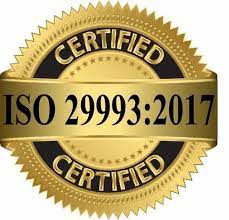
|
|
In the United States, meanwhile, "corporate raiders" bought various corporations whose stock prices were depressed and then restructured them, either by selling off some of their operations or by dismantling them piece by piece. In some cases, companies spent enormous sums to buy up their own stock or pay off raiders. Critics watched such battles with dismay, arguing that raiders were destroying good companies and causing grief for workers, many of whom lost their jobs in corporate restructuring moves. But others said the raiders made a meaningful contribution to the economy, either by taking over poorly managed companies, slimming them down, and making them profitable again, or by selling them off so that investors could take their profits and reinvest them in more productive companies. The 1990s and Beyond The 1990s brought a new president and new congressional leadership after 40 years. After unsuccessfully urging Congress to enact an ambitious proposal to expand health-insurance coverage, Clinton and Gingrich declared that the era of "big government" was over in America. They pushed to strengthen market forces in some sectors, working with Congress to open local telephone service to competition. He also joined Republicans to reduce welfare benefits. Still, although Bill Clinton and Newt Gingrich reduced the size of the federal work force, the government continued to play a crucial role in the nation's economy. Most of the major innovations of the New Deal, and a good many of the Great Society, remained in place. And the Federal Reserve system continued to regulate the overall pace of economic activity, with a watchful eye for any signs of renewed inflation. The economy, meanwhile, turned in an increasingly healthy performance as the 1990s progressed. With the fall of the Soviet Union and Eastern European communism in the late 1980s, trade opportunities expanded greatly. Technological developments brought a wide range of sophisticated new electronic products. Innovations in telecommunications and computer networking spawned a vast computer hardware and software industry and revolutionized the way many industries operate. The economy grew rapidly, and corporate earnings rose rapidly. Combined with low inflation and low unemployment, strong profits sent the stock market surging; the Dow Jones Industrial Average, which had stood at just 1,000 in the late 1970s, hit the 11,000 mark in 1999, adding substantially to the wealth of many -- though not all -- Americans.
Japan's economy, often considered a model by Americans in the 1980s, fell into a prolonged recession -- a development that led many economists to conclude that the more flexible, less planned, and more competitive American approach was, in fact, a better strategy for economic growth in the new, globally-integrated environment. America's labor force changed markedly during the 1990s. Continuing a long-term trend, the number of farmers declined. A small portion of workers had jobs in industry, while a much greater share worked in the service sector, in jobs ranging from store clerks to financial planners. If steel and shoes were no longer American manufacturing mainstays, computers and the software that make them run were. After peaking at $290,000 million in 1992, the federal budget steadily shrank as economic growth increased tax revenues. In 1998, the government posted its first surplus in 30 years, although a huge debt -- mainly in the form of promised future Social Security payments to the baby boomers -- remained. Economists, surprised at the combination of rapid growth and continued low inflation, debated whether the United States had a "new economy" capable of sustaining a faster growth rate than seemed possible based on the experiences of the previous 40 years.
|
|
|
|
|
|
|
|
|
"We now accept the fact that learning is a lifelong process of keeping abreast of change. And the most pressing task is to teach people how to learn." -- Dr. Peter Drucker, Austrian-born American management consultant, educator
|
Home Home Certifications AMC® Training Council Continuing Ed Awards Careers Board Government Jobs Membership Ethics Handbook Events Benefits Exam Sample Omicron Chi News Accredited Degrees Management Degrees Accounting Degrees Financial Analyst Degrees Human Resource Degrees Application Links Disclaimer

Accreditation Bodies: www.GAFM.com * www.GAFM.org * www.CertifiedProjectManager.eu * www.AAFM.org * Certified Project Manager * Certified e-Commerce Consultant *Royal Law Society *Royal Business Society*Royal Business College*Royal Fellows*Royal Economics Academy*Oxford Law School*AAFM*Certified International Project Manager *

